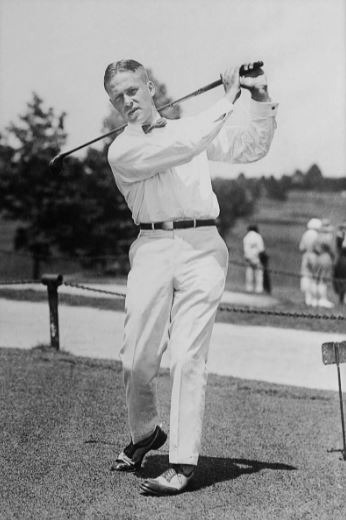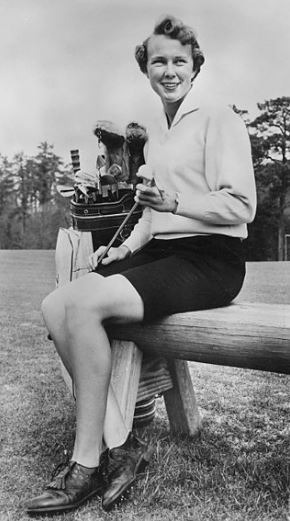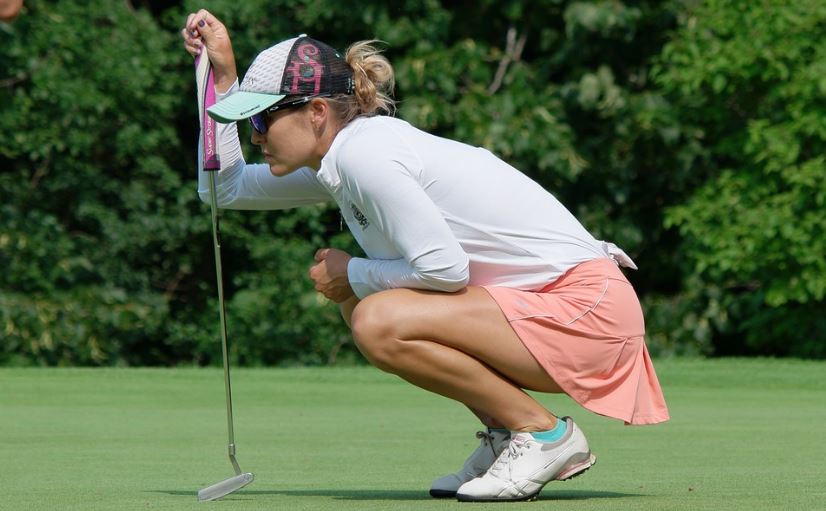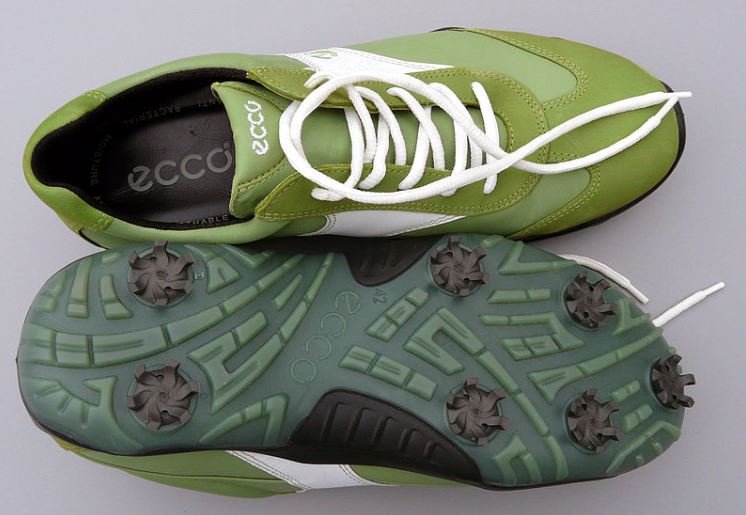As fierce gale blasts up from the sea, golfers grip a sturdy wooden club in their hands and tighten their tweed jackets. The ball flies as they swing, and they pull their headgear to get a better view. And you wondered what makes each golfer look stand out from the rest?
While it is true that sponsorship plays an important role in today’s game, the overall design and style of golf clothing have grown intertwined with the sport over history. So, where did it originate from?
Well, here are some of the major golf fashion milestones along the way!
The Origin of Golf Clothing: 1764 – 1918
Golf was once prohibited in Scotland because men were expected to devote their time to military training rather than recreation. The restriction was only lifted after James IV became a devotee of the sport. From June 11, 1488, until he died in combat in 1513, James IV reigned as King of Scotland. Heavy tweed was used in early golf suits to keep warm in cold weather.
Men wore knickerbockers (knickers) or short pants that ended below the knee and heavy tweed coats to protect themselves from the wind blowing off the water at courses like St. Andrews. Shirts with starched collars and neckties, as well as sturdy shoes and tweed caps.
Well-Dress Golfers: 1918 – 1930
A Vanity Fair advertisement from 1918 first portrayed golfers as ‘well-dressed,’ stressing the trend at the time for men to wear a single-breasted jacket, waistcoat, and, of course, a pair of knickerbockers. Cotton long stockings and golf shoes were frequently worn, with a golf cap rounding out the look.
However, this style took a long time to gain ground; some more known players didn’t begin to dress in this manner until the mid-1920s.
An interesting fact about fashion back in the mid-1920s is: some golfers went even further with their clothes, constructing formal ensembles with knitted cardigans, colorful shirts, ties, longer knickers, patterned golf socks, and two-tone shoes to set themselves.
Heavy Golf Clothes To Casual Clothing: 1930–1933
Later, in the 1930s, golfers began to abandon the classic knickers look, opting instead for flannel trousers or slacks, which were often white or grey in appearance. At the same time, there was a trend away from neckties, which has remained consistent ever since.
Then, during the 1933 US Open, the first push toward more casual apparel was evident – a championship that was played during a heatwave at the time.
Because of the warm temperatures and pleasant weather, many tournament players chose to forego more traditional, and many abandoned heavier golf clothes in favor of more lightweight. This was a game-changer in the evolution of today’s clothes designs.
Contemporary Golf Clothing: 1940 – Present
Golf apparel has stayed largely constant since the 1940s, with many pro-golfers favoring short-sleeved knitted shirts, lightweight pants, strong spiked shoes, and brimmed hats.
Later in the twentieth century, ‘Eisenhower’ coats gained popularity and were commonly seen on several winter courses and driving ranges, along with the ever-popular cardigan sweater.
Many golfers began to wear khakis with colorful shirts and, in some cases, even shorts for the first time during the warmer-weather contests.
Then, as clothing technology advanced, many of the traditional textiles used to make golfing apparel were gradually replaced with modern materials capable of wicking sweat and promoting air circulation.
Women’s Golf Attire
Golf demands a particular level of etiquette, which includes dressing appropriately. While long skirts and blouses are no longer worn on the golf course, using the fairway as a runway to display your personality and golf-style is a wonderful idea.
History
The women’s golf “uniform” of the early 1890s consisted of long, flowy skirts and tight-fitting blouses. However, this outfit didn’t provide a lot of room to move around. Women dressed to the nines at the country club because it was a venue to meet young men, which wasn’t conducive to playing nine. Jackets and sweaters eventually became fashionable. Another interesting fact about fashion is golf dresses first appeared in the 1920s and quickly became popular.
Women could wear Bermuda shorts and sleeveless tops in the early 1960s. In the early 1970s, the skort, a combination of a skirt and shorts, became fashionable.
The 1800s Attire
Miss Amy Pascoe, the Ladies Champion in 1896, is photographed wearing a fashionable dark outfit, possibly made of wool. The skirt reaches the floor, and the jacket has a slim fit and is long-sleeved.
She wears a hat with her hair neatly pulled up, as was customary at the time. It’s a miracle she could play golf at all in her dress, which didn’t allow for much movement.
Modern Fad
Golf apparel includes skorts, shorts of various lengths, capris, long pants, blouses (including sleeveless), and vests. Even well-known brands produce golf-specific apparel. These frequently appear to be more formal than your usual attire.
Check with the course before going because country clubs and private courses may have dress restrictions, including collared shirts for ladies. If you are not dressed appropriately for these courses, you will be sent home.
The Origin Of Golf Shoes
Golf shoes have changed drastically since golfers originally got the idea to walk a course with spikes in the soles of their shoes, just as golf clubs have evolved from basic wooden shafts to flexible, space-age metal models and golf balls have seen similar modifications since the 1800s.
1857: The Birth of Golf Shoes
An 1857 issue of The Golfer’s Manual has one of the earliest mentions of spiked golf shoes. Inexperienced golfers are advised to wear sturdy shoes roughed with small nails or sprigs, to travel securely across the slick ground.
1891: Screw-in Spikes
Golf shoes with separate screw-in spikes were first produced in 1891. Groundkeepers complained about the spikes ruining the greens during the following century, even though they gave better footing for players and were more comfortable than some of the hob-nail shoes and boots were worn by some golfers.
1906: Saddle Oxford
In 1906, Spalding invented the “saddle oxford” shoe, which had an extra saddle-shaped piece of leather wrapped around the laces. It was originally intended for racket sports, but it didn’t catch on. It did become a popular style for golf shoes, and it was still popular in the twenty-first century.
The 1980s: Wearer Friendly
Since their inception, golf shoes have been fairly stiff, but as running shoes and other athletic footwear became more flexible and “wearer-friendly” in the 1980s, golf shoes began to focus on foot support and comfort as well. While saddle Oxford-style shoes remained the most popular, more casual golf shoes began to gain popularity.
The 1990s: Nonmetal Cleats
Nonmetal cleats were introduced in golf shoes in the 1990s to make them more comfortable and less harmful to greens and clubhouse floors. These innovative plastic spikes have quickly established themselves as the industry standard for spiked golf shoes.
2019: Spikeless Shoes
By 2010, a new trend in golf footwear had evolved, which could be traced back to the first golfers: spikeless shoes. A growing number of PGA players have been spotted wearing spikeless shoes, which has fueled demand for more casual golf footwear.




